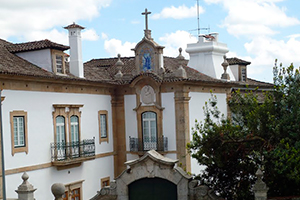 Located near the right bank of the river Zêzere, the parish of Tortosendo is located 5 km from the city of Covilhã, on the southwest slope of Serra da Estrela.
Located near the right bank of the river Zêzere, the parish of Tortosendo is located 5 km from the city of Covilhã, on the southwest slope of Serra da Estrela.
Its settlement dates back to the Lusitanian period, although the definitive settlement of man only took place after the foundation of the Nationality, because until then the foreign invasions did not stop, from the Romans, to the Germanic peoples and the Muslims.
Leisure areas
Tortosendo has a Public Garden in the Largo da Feira area, with lots of trees and flowers, and more green areas, totaling 3,997 m2. Recently, the Parish Council built a bar/terrace kiosk in this place, which is an authentic visiting room of this village and which has improved this leisure area. In 1996, the Parish Council, on a land acquired in Ponte Pedrinha, created another leisure area/river beach. In 1996, the Tortosendo Swimming Pool was opened to the public.
Patrimony
In the village, there is only one manor house, that of the Garrett family, located opposite the Igreja Matriz. It has a private chapel, huge gardens, a swimming pool, stables, an oil mill. There are also other buildings characteristic of this village, the RICH HOUSES of which the Casa das Amarais stands out. On the other hand, we can find the so-called TYPICAL HOUSES, built in stone up to the first floor, wood (taipa) and clay. The walls were generally plastered. Underneath was the store where animals, agricultural products and wine barrels were kept, with the door having the particularity of being wider than the jamb in order to facilitate the entry of wine barrels.
On the upper floor of the store was the dwelling itself, with interior divisions made of pine wood (taipas) and clay. The staircase in this type of house is external, ending in a granite counter (usually with porch) that gives access to the entrance door, connecting with the kitchen, which is usually empty tile. There was a place in the center where the fire was lit, over which the sausages were hung on smoke sticks, at the time of the pig slaughter. It was also decorated by the crockery, benches, stumbling block, witch (roast), salt pan, where the ham was placed, there were also oil or petroleum lamps and the traditional owls (small benches).
The roof of the house was usually tile, but slate was also used a lot. The doors and windows were of reduced dimensions and the rooms (interior divisions) opened onto a common room. These houses also had a porch, full of flowers, typical of beira baixa. Today you can still see these houses in the neighborhoods of Machedes, Escabelados and Maiorais.
